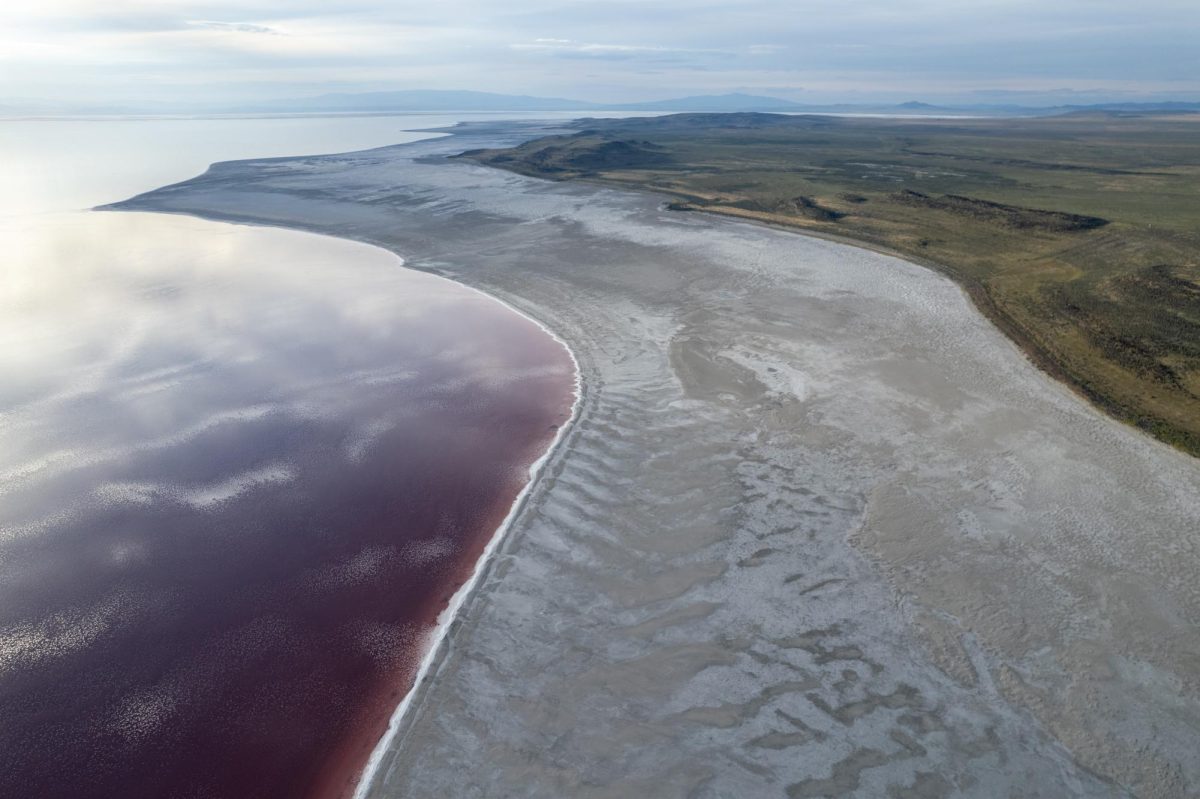The 2034 Winter Olympics and Paralympics are being held in Salt Lake City. This news was met with excitement to all living in Utah.
The Utah State Legislature has put $94 million towards maintaining Olympic facilities and structures in the past. The 2034 Olympics are expected to cost about $4 billion.
Salt Lake has more expensive issues to solve before the city worries about the Olympics.
Without intervention, Great Salt Lake is expected to dry up by 2030. Not only will this harm wildlife and potentially cause extinction among different species, but the heavy metals from the dried-up lake will make the Salt Lake City air extremely harmful and potentially poisonous.
It is irrational for Utah to put billions of dollars towards planning the Winter Olympics when the drying of Great Salt Lake will leave Salt Lake City no longer safely habitable.
The Death of Great Salt Lake
The drying of this lake comes with a variety of health implications.
The lakebed is covered in a hard crust currently, but wind erosion will weaken this crust and blow metals into the air. When the particles from this soil become airborne, they are very harmful to inhale. Inhalation of these metals over time can cause several respiratory and cardiovascular issues.
Great Salt Lake has lost roughly half its volume and has dropped 8.5 feet since 1875. The loss in volume of the lake is a problem now. The chemicals from the soil, such as arsenic, lead, cadmium and other dangerous heavy metals are already being exposed to the air.
Not only will the drying of Great Salt Lake make the surrounding air essentially poisonous, specifically around the Salt Lake City metropolitan area, but wildlife is currently being impacted by the lack of water.
Why is the Lake Dying?
The population of Salt Lake City is rapidly increasing.
Utah is one of the fastest growing states and this increase of population calls for compensation in several areas. Farmers across Utah are pulling more water for their crops, water and runoff that should be filling Great Salt Lake.
Increase in population also means an increase in people who need water, leaving less and less for the lake.
This has caused the lake to shrink dramatically.
Unfortunately, filling the lake isn’t as simple as using less water for crops. Great Salt Lake has been deprived of water for so long that it will now take billions of dollars to bring it back to its previous state. State officials have repeatedly identified the drying of Great Salt Lake as a crisis.
Despite this, efforts to fill the lake have been minimal.
Salt Lake City Winter Olympics
Drastic intervention would be made and hopefully push back the drying of the lake by several years, if the Utah State legislature put as much money into replenishing Great Salt Lake as they are for the 2034 Olympics,
Even if the $4 billion allocated to the Olympics was put towards saving the lake, the issue would not be resolved. Solving the environmental crisis that is the drying of Great Salt Lake is no small feat. It is expected to cost $100 billion to raise the water level by 3 feet.
This number is very disheartening, but any amount of help, funding and resources is crucial.
This environmental catastrophe reaches far beyond the Winter Olympics. The people and wildlife of Salt Lake City need Great Salt Lake to stay full of water.
Hope for the Future
I’m just as excited as everyone else for the 2034 Olympics to be held in Salt Lake City, but if competing athletes and attendees are risking their health to be here, it’s not worth having the Olympics at a nearby location.
Lots of sources and money need to be allocated to saving the lake.
That should be Salt Lake City’s top priority.
Ideally, Salt Lake City could find a way to fill the Great Salt Lake enough to make the Olympics a safe possibility. As of right now that is not the case.
The process of selecting a location for the Olympic Games is very thorough and selective. The Salt Lake City-Utah Committee for the Games should’ve thought about if the area would be habitable when the games are being held.





Jennifer • Oct 21, 2024 at 12:18 pm
Great points. The air quality in the winter along the Wasatch Front is always problematic, but with the drying of the GSL and the toxic dust left in the dry lake bed, it’s a health hazard that Utahns and visitors from around the world shouldn’t be subjected to. I’m surprised that this issue and the disappearing winter weather conditions weren’t deal breakers for getting the Olympics in the first place.